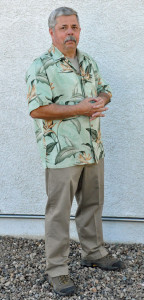
A doctor, a lawyer and a Texas oil man each came to me with the same question: I intend to carry a concealed weapon and need to know the best way to do it. The doctor said he was considering an ankle holster because he frequently wore scrubs while working in the hospital. The lawyer was concerned with carry options when dressed in casual and formal business attire and the oil man wanted advice on the best way to conceal a pistol in an office setting where he wore a suit but sometimes wished to remove his jacket.
Like my friends, some of you may have questions about how to carry, what kind of holster to select and how to dress to conceal your firearm.
You have two basic options for concealing a pistol; off body and on body carry.
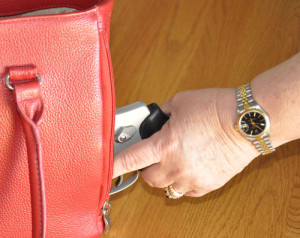 Off body carry means carrying in purses, backpacks, fanny packs and paper bags. Paper bags, you say? Well, yes, I have known a few bandits and armed robbers who hid their pistol in a paper bag but I don’t recommend the practice. The advantage of off body carry is that you don’t need to dress to conceal your pistol. The disadvantage is you can be separated from your gun. Bags not specifically designed to hold a handgun are ill advised, as the pistol can shift around and be covered by other items – think the bottom of a purse and you’ll get the idea.
Off body carry means carrying in purses, backpacks, fanny packs and paper bags. Paper bags, you say? Well, yes, I have known a few bandits and armed robbers who hid their pistol in a paper bag but I don’t recommend the practice. The advantage of off body carry is that you don’t need to dress to conceal your pistol. The disadvantage is you can be separated from your gun. Bags not specifically designed to hold a handgun are ill advised, as the pistol can shift around and be covered by other items – think the bottom of a purse and you’ll get the idea.
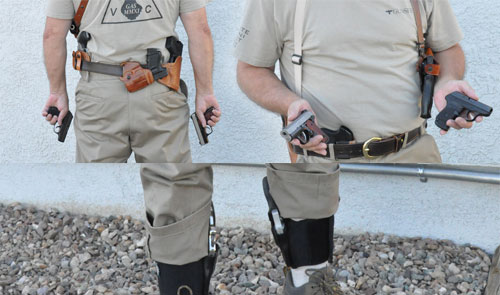
To assure you aren’t separated from your pistol and have easy access to it when needed, on-the-body carry is recommended. Here are some of the carry options:
Belt carry
This usually means carrying the pistol in a holster on the belt so it can be drawn with the shooting hand. I carried a pistol on a duty belt for many years and got used to having my pistol on my hip so this is my default carry position. Unlike a duty rig, for concealed carry I like to be able to move the holster forward and backward on the belt a few inches. For best concealment a position just behind the hip works well. When sitting down I like to slide the pistol forward to keep it from poking me in the kidneys. The disadvantage of carrying on the belt is you have to dress to cover the pistol. Suit coats, jackets, vests, and loose shirts can do the trick, but you may be limited in your clothing choices. Personally, I’m a fan of Hawaiian shirts and often carry two pistols, one on each side, concealed under the shirt. This may not work too well if you’re a lawyer and need to be in court. During the winter a jacket can be worn to cover the pistol, but what happens if you need to go inside where it’s too warm to stay covered? Since I reside in Arizona and pretty much live in boots and jeans during the cooler months, I’ll often wear a western cut vest under my jacket so my pistols stay concealed if I take off my coat.
Inside the waistband carry (IWB)
These holsters go inside the trousers, offering a high level of concealment, and require only a minimal covering garment. A small pistol can be concealed in an IWB holster and covered with a t-shirt. IWB holsters can be worn strong side, off side, cross draw and in the appendix position, meaning in front of the hipbone. I know a lady who carries a small revolver inside the waistband in the center of her stomach (excuse me, that’s tummy). Whether wearing shorts, pants or a skirt, she covers the pistol by loosely tucking in her shirt or wearing it out. IWB carry can be uncomfortable if your trousers are too snug, so buying pants a size larger will help. If you’re having a suit tailored, wear your pistol and have the waistband adjusted to fit. You may find, like my lady friend, that a loosely tucked shirt is sufficient to hide the pistol when you take off your jacket. Poor quality IWB holsters collapse when you take the pistol out and make re-holstering impossible without getting undressed so shop wisely. As always, holster slowly and carefully – you don’t want to shoot yourself in the butt, or worse, in the femoral artery. Stuffing a gun in your waistband without a holster is a prescription for disaster as you’re risking shooting yourself or losing the gun. Feeling your unsecured pistol slide down inside your trouser leg can be an interesting experience.
Pocket carry
If the gun is small enough, or your pockets are big enough, pocket carry may be for you. Always use a holster, carefully put the pistol in the holster then put the holster in your pocket. Never attempt to put the pistol in the holster if the holster is in your pocket. Some people carry a primary pistol on the belt and a back up in a pocket holster, either in a trouser or jacket pocket. The main disadvantage to carry in a trouser pocket is that the pistol is inaccessible while you’re seated or moving.
Ankle carry
Ankle holsters can be very concealable and no cover garment is needed. Poor ones slide around on the leg and may allow the gun to fall out if you’re running or fighting. The usual carry method is on the inside of the ankle on the support side leg. There are a number of ways to draw the gun, from lifting the leg to going down on one knee, so practice is important. The pistol can usually be accessed when sitting, but not if you’re driving. If you don’t wear a belt to support a pistol (my doctor friend wearing scrubs) ankle carry may be for you. The main disadvantages are you can’t wear western boots (my Texas friend), you can’t draw while moving or running and you’re going to be limited to a small, lightweight pistol, as carrying a large heavy one on your ankle is a non-starter.
Shoulder holsters
If you wear a tux, a shoulder holster and Walther PPK are required accessories. Everything from small pistols to hunting cannons can be carried in shoulder holsters and can be concealed if you wear enough clothing. Since you need to get your hand on the gun a zipped up parka is going to be a problem with the bear defense Magnum so be alert! The first time I wore a shoulder holster in plain clothes I ended up on the ground handcuffing a runner. As my jacket swung open I saw the guy staring at my gun and realized he had better access to it than I did. That was the end of my James Bond/shoulder holster career. Still, shoulder holsters can be useful and are ideal when driving or riding. A friend carries a .44 Magnum snubbie in a shoulder rig when riding his motorcycle.
You’re probably going to end up with more than one holster for your pistol and will carry it using several of these methods. Finding the right combination is a never-ending process and there is no one best holster or gun for concealed carry. If you’re just getting started one day you’ll be like me – with a bunch of pistols and a couple of boxes of holsters. Welcome to the club.
About the Author:
 Ed Head is a regular on Shooting Gallery and Down Range TV. He has worked for almost 30 years in law enforcement, first in the United States Air Force and then with the United States Border Patrol, retiring as a Field Operations Supervisor. During his Border Patrol career, Ed worked in a variety of patrol, investigative and training capacities. Ed has an extensive background as a firearms instructor, having trained thousands, ranging from beginners to police, military and special operations personnel. Having taught at Gunsite for 20 years, Ed first trained there under the world famous shooting school’s founder, Jeff Cooper, then later ran the school as the operations manager for more than five years. Ed lives in Chino Valley, Arizona, where he continues to teach and write.
Ed Head is a regular on Shooting Gallery and Down Range TV. He has worked for almost 30 years in law enforcement, first in the United States Air Force and then with the United States Border Patrol, retiring as a Field Operations Supervisor. During his Border Patrol career, Ed worked in a variety of patrol, investigative and training capacities. Ed has an extensive background as a firearms instructor, having trained thousands, ranging from beginners to police, military and special operations personnel. Having taught at Gunsite for 20 years, Ed first trained there under the world famous shooting school’s founder, Jeff Cooper, then later ran the school as the operations manager for more than five years. Ed lives in Chino Valley, Arizona, where he continues to teach and write.

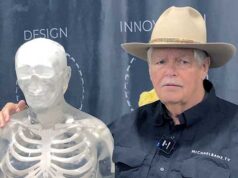
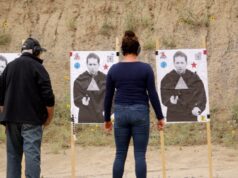
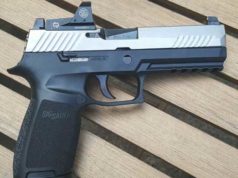
Michael,
I could not leave a voice mail on the CCW on a bike show. I ride a 02 GS Adv. I use my Safepacker slung on my back under my jacket. MGATT. If it’s warm I put my Kimber Crimson Carry .45 in the top of my big Chase Harper Euro tank bag in a simple nylon holster. The is enough stuff in there that it stays right on top. In 30 years of carry I have only had to pull once. A couple times all I needed to do was unzip and slung the Safepacker around.
BTW When are you going to address New Yorkistan’s Safe act.? It is facist. Cuomo is a dictator!! Love your work.
Keith